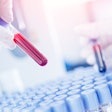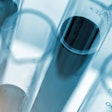
Physicians’ offices have evolved into a sizable specialty market served by in vitro diagnostic (IVD) companies that generated more than $8.3 billion in IVD product sales globally in 2022, according to a report published by Kalorama Information.
According to the Physician Office Lab IVD Markets report, nearly 7% of all in vitro diagnostics sales are for a test performed in a physician's office.
An estimated 770 million world physician office visits will occur in 2023, providing ample opportunity for testing.
The market estimate excludes sales to urgent care centers for which Kalorama, a LabPulse sister company, provides a separate estimate.
Over the next several years, numerous trends and factors will affect the value and volume of physicians’ office testing activities worldwide.
The following are influencing physician office lab IVD revenue growth:
- The increase in the number of diseases for which the physician's office is often first to test, which include COVID-19, cancer, hepatitis, influenza, malaria, chlamydia, HIV, tuberculosis, and pneumonia.
- Advancing IVD technologies will increase the range of diseases and disorders adaptable to physicians’ office testing.
- A gradual easing of pandemic pressures, along with increasing competition from self-testing products, will lead to a steady reduction in the number of COVID-19 tests implemented by physicians’ offices.
- The increasing availability of point-of-care (POC) IVD testing in retail establishments and hospital outpatient departments will reduce the overall global volume of traditional physicians’ office testing.
Factors limiting the market include the following:
- Cost pressures from government health programs and health insurance providers will limit coverage and reimbursement rates for physicians’ office tests.
- Although growing, the volume of physicians’ office tests implemented in most developing countries will remain comparatively low due to imbalances in the availability and accessibility of healthcare.
- The expanding use of wearable healthcare devices and telehealth services, especially in developed countries, will lower the overall volume of physicians’ testing by reducing the number of unnecessary tests.
Beyond the above trends and factors, the structure of the medical delivery system will influence the volume of physicians’ office testing within a country. For example, in China and many other countries, most physicians’ practices are in hospitals, which have ready access to institutional laboratories. Accordingly, the volume of physicians’ office testing in some countries is comparatively low. By contrast, most physicians’ practices in developed economies operate as independent entities and are encouraged to engage in onsite testing to expand revenue potential.
The report also found that COVID-19 testing products will continue to account for the largest share of global sales, but their overall sales value will decrease steadily as the volume of new cases declines and alternative self-testing products capture potential applications. Non-COVID infectious diseases tests, particularly new diseases or diseases for which new tests are introduced, will post the second-largest worldwide sales value among IVD products used in physicians’ office laboratories during the next five years.



















